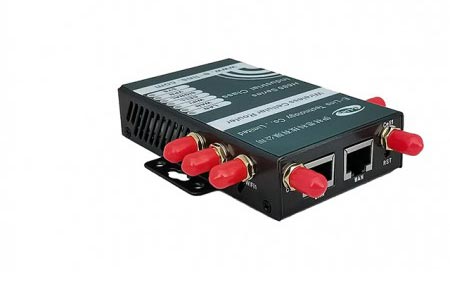Is there such a thing as a 5G modem?
May 13,2024 | Views: 411
In the era of rapid technological advancement, the emergence of 5G networks has spurred inquiries into the existence and functionality of 5G modems.
A 5G modem serves as the cornerstone of 5G-enabled devices, facilitating their connection to 5G networks and harnessing the transformative capabilities of this next-generation technology. At its core, a 5G modem is tasked with converting digital data into radio waves for transmission across 5G infrastructure, enabling seamless communication and data exchange at unprecedented speeds.
The evolution of modem technology has been marked by successive leaps in performance and efficiency, with each iteration paving the way for enhanced connectivity experiences. From the advent of 2G and 3G to the widespread adoption of 4G LTE, the trajectory of modem innovation has been characterized by a relentless pursuit of speed, reliability, and versatility.
The introduction of 5G modems heralds a new era of connectivity, promising unparalleled speed, reduced latency, and expanded bandwidth for a diverse range of applications. With download speeds surpassing gigabit levels and latency minimized to imperceptible levels, 5G modems empower users to unlock the full potential of immersive multimedia experiences, real-time gaming, and IoT integration.
While the promise of 5G technology is undeniably enticing, the realization of its full potential hinges upon overcoming various technical and logistical challenges. Issues such as network coverage, spectrum availability, and interoperability pose formidable obstacles to the widespread adoption of 5G modems, necessitating collaborative efforts from industry stakeholders to address these concerns.
In conclusion, the advent of 5G modems represents a pivotal milestone in the ongoing evolution of connectivity, offering a glimpse into a future defined by unprecedented speed, reliability, and innovation.
Prev: What is the fastest 5G modem?
Next: Can you connect router to 4G?
A 5G modem serves as the cornerstone of 5G-enabled devices, facilitating their connection to 5G networks and harnessing the transformative capabilities of this next-generation technology. At its core, a 5G modem is tasked with converting digital data into radio waves for transmission across 5G infrastructure, enabling seamless communication and data exchange at unprecedented speeds.
The evolution of modem technology has been marked by successive leaps in performance and efficiency, with each iteration paving the way for enhanced connectivity experiences. From the advent of 2G and 3G to the widespread adoption of 4G LTE, the trajectory of modem innovation has been characterized by a relentless pursuit of speed, reliability, and versatility.
The introduction of 5G modems heralds a new era of connectivity, promising unparalleled speed, reduced latency, and expanded bandwidth for a diverse range of applications. With download speeds surpassing gigabit levels and latency minimized to imperceptible levels, 5G modems empower users to unlock the full potential of immersive multimedia experiences, real-time gaming, and IoT integration.
While the promise of 5G technology is undeniably enticing, the realization of its full potential hinges upon overcoming various technical and logistical challenges. Issues such as network coverage, spectrum availability, and interoperability pose formidable obstacles to the widespread adoption of 5G modems, necessitating collaborative efforts from industry stakeholders to address these concerns.
In conclusion, the advent of 5G modems represents a pivotal milestone in the ongoing evolution of connectivity, offering a glimpse into a future defined by unprecedented speed, reliability, and innovation.

 Networking
Networking EMBEDDED SYSTEMS
EMBEDDED SYSTEMS Switches
Switches Wireless Solutions
Wireless Solutions Industrial Computer
Industrial Computer Cloud Services
Cloud Services




